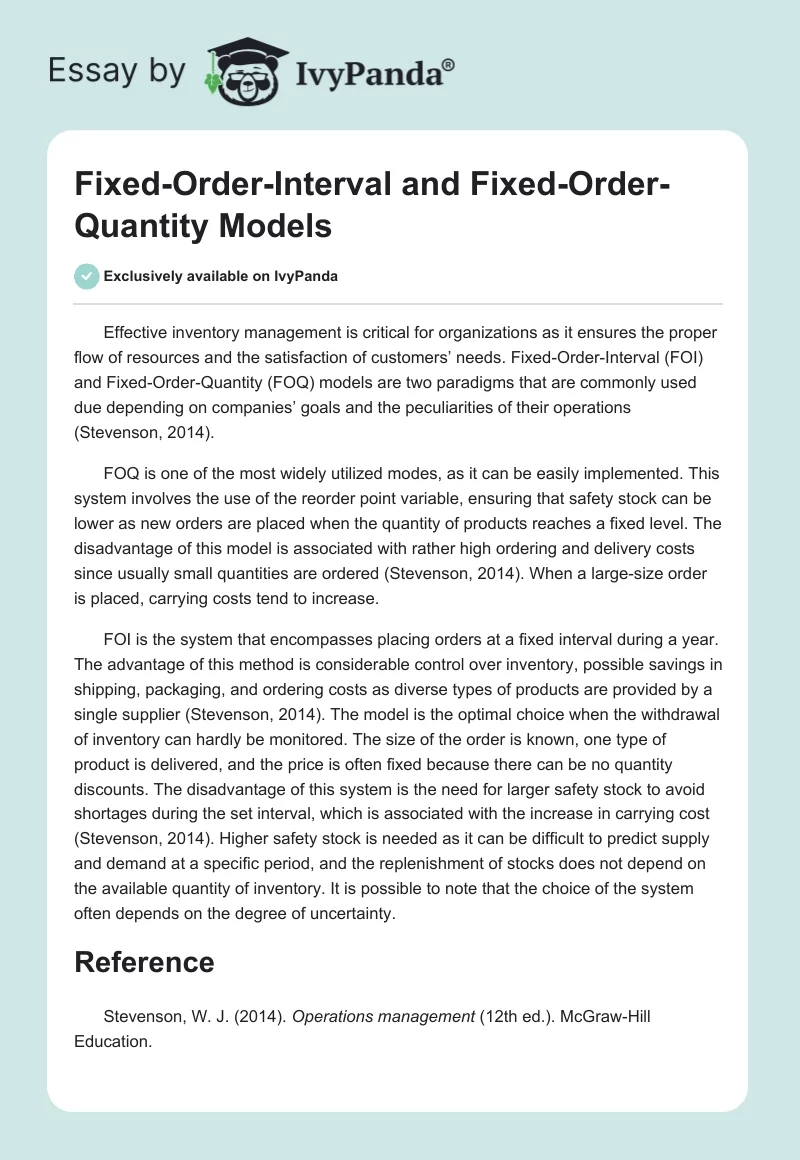Effective inventory management is critical for organizations as it ensures the proper flow of resources and the satisfaction of customers’ needs. Fixed-Order-Interval (FOI) and Fixed-Order-Quantity (FOQ) models are two paradigms that are commonly used due depending on companies’ goals and the peculiarities of their operations (Stevenson, 2014).
FOQ is one of the most widely utilized modes, as it can be easily implemented. This system involves the use of the reorder point variable, ensuring that safety stock can be lower as new orders are placed when the quantity of products reaches a fixed level. The disadvantage of this model is associated with rather high ordering and delivery costs since usually small quantities are ordered (Stevenson, 2014). When a large-size order is placed, carrying costs tend to increase.
FOI is the system that encompasses placing orders at a fixed interval during a year. The advantage of this method is considerable control over inventory, possible savings in shipping, packaging, and ordering costs as diverse types of products are provided by a single supplier (Stevenson, 2014). The model is the optimal choice when the withdrawal of inventory can hardly be monitored. The size of the order is known, one type of product is delivered, and the price is often fixed because there can be no quantity discounts. The disadvantage of this system is the need for larger safety stock to avoid shortages during the set interval, which is associated with the increase in carrying cost (Stevenson, 2014). Higher safety stock is needed as it can be difficult to predict supply and demand at a specific period, and the replenishment of stocks does not depend on the available quantity of inventory. It is possible to note that the choice of the system often depends on the degree of uncertainty.
Reference
Stevenson, W. J. (2014). Operations management (12th ed.). McGraw-Hill Education.

